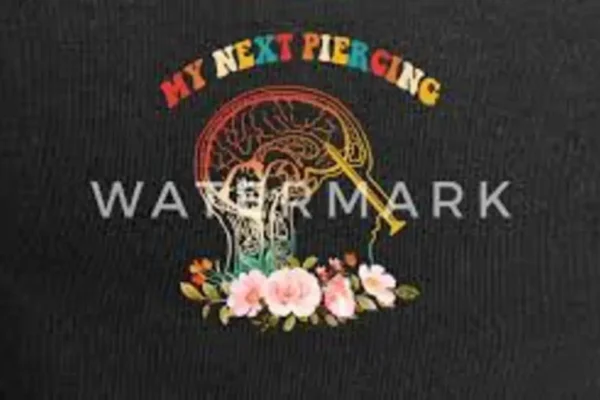

Lobotomy Piercing: A Deep Dive into the Unique World of Body Modification
Lobotomy piercing is a term that might raise eyebrows and spark curiosity among body modification enthusiasts and the general public alike. This unique form of body piercing has gained traction in recent years, becoming a topic of discussion in various circles. In this article, we will explore the origins, techniques, cultural significance, and aftercare associated with , providing a comprehensive understanding of this intriguing practice.
Understanding Lobotomy Piercing
Lobotomy piercing is not just a trend; it’s a statement. This type of piercing typically involves the placement of jewelry through the skin of the upper ear, often resembling the look of a traditional lobe piercing but with a twist. The term “lobotomy” itself is derived from a surgical procedure that involves severing connections in the brain, but in the context of body modification, it refers to a more artistic and expressive form of self-identity.
The appeal of lobotomy piercing lies in its ability to blend aesthetics with personal expression. Many individuals choose this piercing to showcase their unique style, while others may see it as a form of rebellion against societal norms. The jewelry used in can vary widely, from simple studs to elaborate designs featuring chains or other decorative elements. This versatility allows for a high degree of personalization, making each lobotomy piercing a reflection of the wearer’s individuality.
The History of Lobotomy Piercing
The history of lobotomy piercing is intertwined with the broader narrative of body modification practices. Body piercing has been a part of human culture for thousands of years, with evidence of ear piercings dating back to ancient civilizations. However, the specific practice of is a more recent development, emerging in the late 20th century as body modification gained popularity in Western cultures.
As the punk and alternative scenes began to flourish, individuals sought ways to express their identities through their appearance. Lobotomy piercing emerged as a bold choice, often associated with the underground culture that embraced nonconformity. This piercing style quickly gained traction among those looking to push boundaries and challenge societal expectations regarding beauty and self-expression.
Techniques and Placement
When it comes to lobotomy piercing, technique and placement are crucial for achieving the desired look and ensuring safety. The piercing is typically performed using a hollow needle, which creates a clean hole in the skin. This method minimizes trauma to the surrounding tissue, promoting faster healing and reducing the risk of complications.
Placement is another important aspect of lobotomy piercing. While the upper ear is the most common location, some individuals may choose to have multiple along the ear’s edge. The positioning can significantly impact the overall aesthetic, allowing for creative combinations with other piercings. It’s essential for individuals to consult with a professional piercer to determine the best placement for their unique anatomy and style preferences.
Jewelry Options for Lobotomy Piercing
One of the most exciting aspects of lobotomy piercing is the wide variety of jewelry options available. From minimalist designs to extravagant pieces, the choices are virtually limitless. Common materials used for lobotomy piercing jewelry include surgical stainless steel, titanium, and gold, all of which are biocompatible and safe for long-term wear.
For those who prefer a more edgy look, jewelry featuring spikes, chains, or charms can add a unique flair to the . Additionally, many individuals opt for custom-made pieces that reflect their personal style. The ability to mix and match different jewelry styles allows wearers to create a look that is entirely their own, making lobotomy piercing a truly personalized form of body art.
Cultural Significance and Acceptance
As body modification practices continue to evolve, the cultural significance of lobotomy piercing has also changed. Once viewed as a fringe practice, lobotomy piercing has gained acceptance in mainstream culture, with many celebrities and influencers sporting the look. This shift has contributed to a broader conversation about body autonomy and self-expression, encouraging individuals to embrace their unique identities.
In various cultures, body piercings have long been associated with rites of passage, spiritual beliefs, and social status. Lobotomy piercing, while more contemporary, can also carry personal significance for those who choose to undergo the procedure. For many, it represents a journey of self-discovery and empowerment, allowing them to reclaim their bodies and express their individuality in a world that often pressures conformity.
Aftercare for Lobotomy Piercing
Proper aftercare is essential for ensuring the longevity and health of a lobotomy piercing. After the procedure, it’s crucial to follow the aftercare instructions provided by the piercer. This typically includes cleaning the area with saline solution or a mild antiseptic, avoiding touching the piercing with dirty hands, and refraining from swimming in pools or hot tubs during the healing process.
Healing times for lobotomy piercings can vary, but most individuals can expect the piercing to take anywhere from six weeks to several months to fully heal. During this time, it’s important to monitor the piercing for any signs of infection, such as redness, swelling, or discharge. If any concerning symptoms arise, it’s advisable to consult a healthcare professional or the piercer for guidance.
The Future of Lobotomy Piercing
As body modification continues to evolve, the future of lobotomy piercing looks promising. With advancements in piercing techniques and a growing acceptance of diverse forms of self-expression, it’s likely that this unique piercing style will continue to gain popularity. Additionally, as more individuals seek to personalize their body art, we can expect to see innovative jewelry designs and creative placements that push the boundaries of traditional piercing.
The conversation surrounding body modification is also shifting, with an increasing emphasis on mental health and self-acceptance. For many, lobotomy piercing serves as a form of therapy, allowing individuals to reclaim their bodies and express their identities in a way that feels authentic. As society becomes more open to diverse forms of self-expression, may play a significant role in shaping the future of body art.
Conclusion
Lobotomy piercing is more than just a trend; it’s a powerful form of self-expression that reflects the individuality of those who choose to embrace it. With its rich history, diverse techniques, and cultural significance, lobotomy piercing has carved out a unique space in the world of body modification. As we look to the future, it’s clear that this piercing style will continue to evolve, inspiring individuals to celebrate their uniqueness and challenge societal norms. Whether you’re considering a lobotomy piercing for yourself or simply curious about the practice, understanding its significance can deepen your appreciation for this fascinating form of body art.















